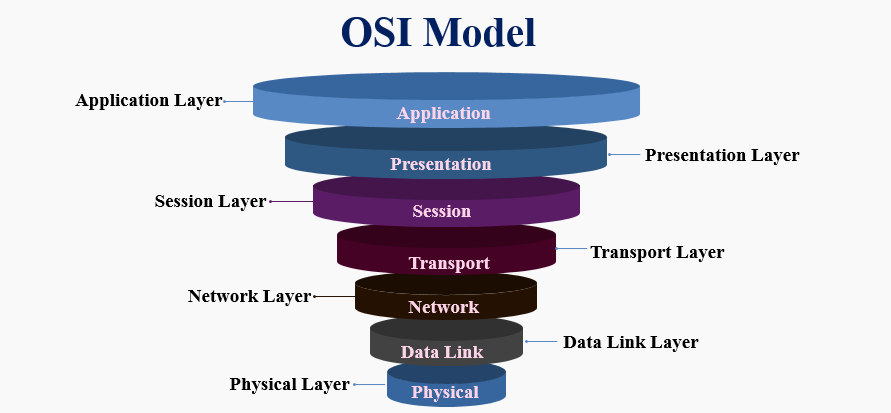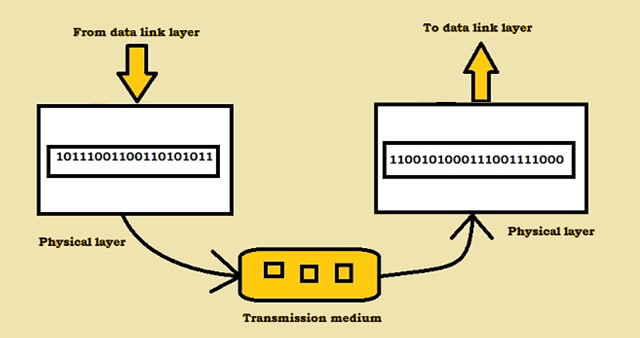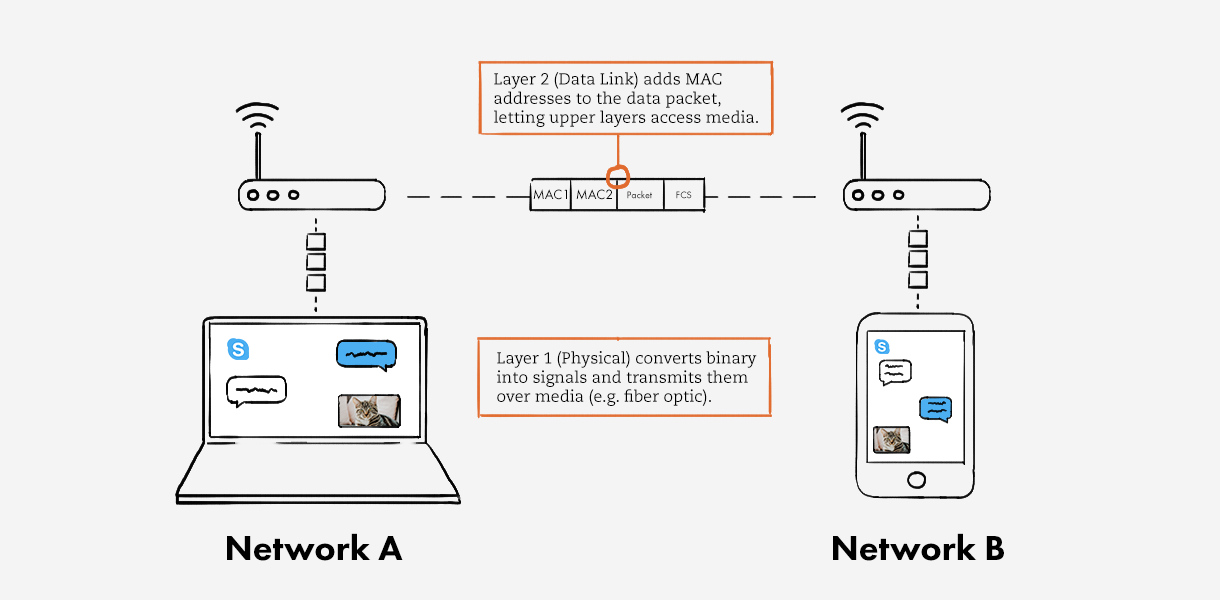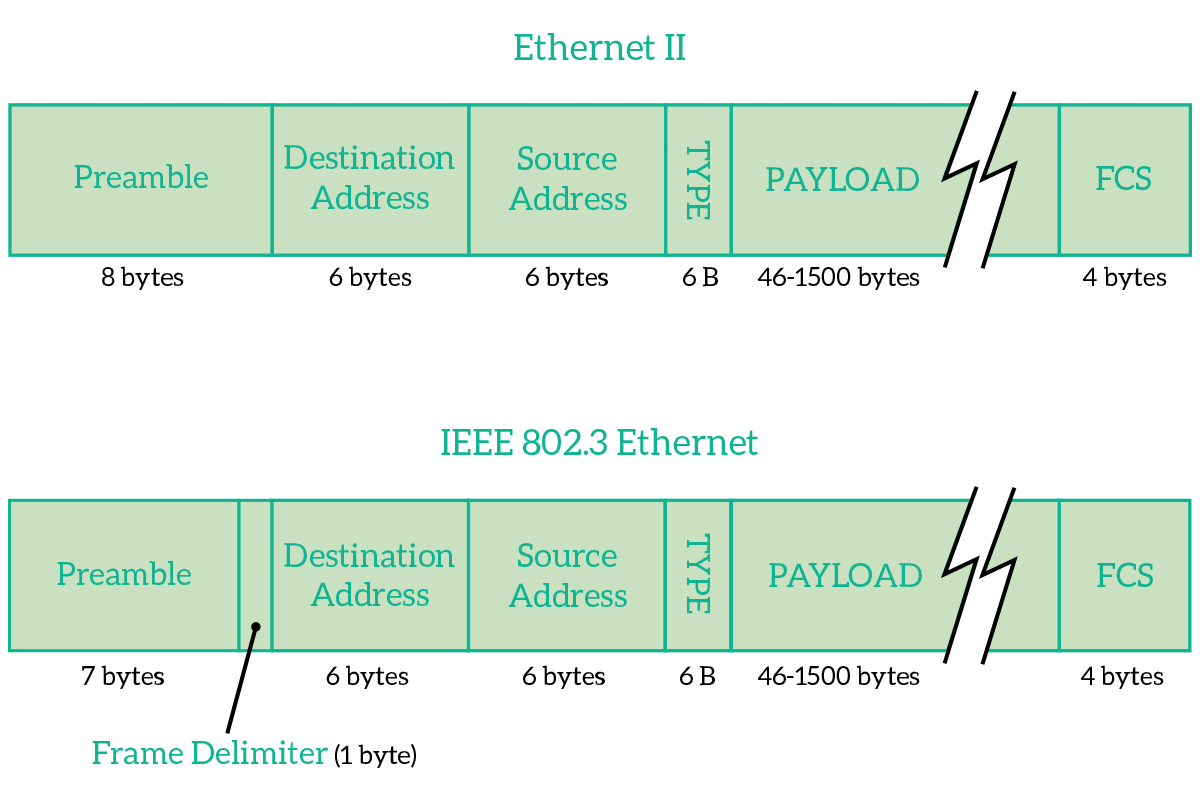FTC disclaimer: This post contains affiliate links and I will be compensated if you make a purchase after clicking on my link.
The Open Systems Interconnection (OSI) model is the most widely used model for network communication.
It was developed in the 1970s and is based on seven layers: the physical layer, the data link layer, the network layer, the transport layer, the session layer, and the application layer.
The OSI model is often used to describe how different networks interact with each other.
What is OSI Model?
The OSI model is a conceptual framework for understanding how different networking systems interoperate.
OSI Model is a model for the structure of computer networks. It comprises seven layers: the physical layer, the data link layer, the network layer, the transport layer, the session layer, and the application layer.
Each layer provides different types of communication services and its own set of rules. The physical layer includes information about how devices are connected.
The data link layer manages data exchanges between devices on the network. The network layer manages packets and routing.
The model was first developed in the 1970s and has since been widely adopted by networks worldwide.
Why is OSI Model used?
The OSI model is a seven-layer networking model that provides a framework for networking communication.
Moreover, the OSI model was created to provide a standard for networking communication and address the issues that arose with the various networking models used at the time.
Further, the OSI model is widely used in networking and communication and is considered the industry standard.
The OSI model is essential for networking and communication because it provides a common language that allows different systems to communicate.
By understanding the functions of each layer, engineers can create efficient and reliable communications systems.
This layered approach allows for modularity and portability, as each layer can be implemented independently of the others.
Benefits of OSI Model
One of the benefits of using the OSI model is that it provides a common language for networking professionals. When you understand the functions of each layer, you can communicate more effectively with other professionals about your network.
Another benefit of the OSI model is that it can help you troubleshoot networking problems. If you know which layer is having issues, you can more easily identify and fix the problem.
Different Layers of OSI Model
Physical Layer (Layer 1)
The Physical Layer is the first layer in the OSI model. It operates at the network’s lowest level, handling raw data transmission onto the network medium.
The Physical Layer is responsible for encoding and decoding signals and ensuring that data is transmitted correctly. It also manages the flow of data through the network.
It also manages timing and synchronization, ensuring that data is transmitted on time.
Further, it is responsible for the physical connection between the network’s nodes, such as cables, wireless technology, or connectors. It also controls bit rates and transmits raw data.
This layer is crucial for troubleshooting and communicating the working of the network’s other layers.
What are the components of the physical layer?
The physical layer comprises different components which determine how data is transmitted between network nodes.
The physical layer consists of three main components: transmission media, transceivers, and connectors.
Transmission media includes wires, cables, and optical fibers. Transceivers convert electrical signals into optical or radio signals, and connectors attach transmission media to devices such as computers and routers.
When networking professionals discuss the devices connected in the physical layer, they typically refer to the seven layers of the OSI model.
In this model, the physical layer is responsible for transmitting bits between devices. This can be done through various means, such as electrical signals, light waves, or radio waves.
The physical layer is also responsible for encoding and decoding data so it can be transmitted across a network. In order to do this, the physical layer must understand the properties of the transmission medium.
For example, if a network uses fiber optic cables, the physical layer must know how to encode and decode data using light signals.
Most networking devices reside in the physical layer. These devices include Ethernet switches, routers, and modems. The physical layer is also responsible for connecting these devices to each other.
Data Link Layer (DLL) (Layer 2)
The Data Link Layer is responsible for reliable data transmission between devices on a network.
It is also responsible for ensuring that data is formatted correctly before transmission. The Data Link Layer manages data transmission between devices and ensures that packets are delivered in the correct order.
The Data Link Layer can be used to provide security features, such as authentication and encryption.
Data Link Layer Sub-Layers
Data Link Layer is divided into two sub-layers: the Media Access Control (MAC) sub-layer and the Logical Link Control (LLC) sub-layer.
The MAC sub-layer manages access to the media, while the LLC sub-layer provides error-free data transmission between devices. The LLC sub layer also handles frame synchronization, collision detection, and recovery.
These sublayers are responsible for addressing and multiplexing. The data link layer also coordinates the data flow and the transmission rate. In addition to these functions, the MAC sub-layer assists with access control.
The function of the Data Link Layer (Layer 2)
The Data Link Layer is responsible for framing packets into frames and adding physical addressing information.
The Data Link Layer also provides error control, flow control, and access control.
Error control ensures packets are not corrupted during transmission, while flow control prevents the sender from overwhelming the receiver.
Access control ensures that only authorized devices can access the network.
It ensures that the data is correctly formatted and error-free before passing it to the next layer.
The Data Link Layer also manages the transmission of messages across a physical network medium.
The DLL is responsible for addressing, ensuring the initial connection has been established, dividing output data into data frames, and handling acknowledgments from the receiver.
It also handles errors at the lower layers of the network stack. It also reorders frames that are out of order, such as a misplaced packet.
Network Layer (Layer 3)
The network layer is responsible for routing packets between hosts on the network. It determines the best path to send a packet and forwards it accordingly.
The network layer also adds addresses to packets to be delivered to the correct destination. Finally, it breaks up packets into smaller pieces called frames for transmission over the network.
The network layer is responsible for providing the necessary procedural and functional means for transferring variable-length data sequences.
Data is transferred through one or more networks, where the protocols are then decoded at the receiving end to transmit data.
It also ensures the quality of service functions. Data is encrypted at the sending end and decoded at the receiving end.
The function of Network Layer (Layer 3)
The network layer, also known as layer 3 of the OSI model, is responsible for routing packets across the internetwork.
It uses logical addressing to determine the best path to send a packet to its destination.
Routing tables map destinations to networks or nodes, and routers use these tables to determine how to forward packets.
Addressing schemes such as IPv4 and IPv6 are also used by the network layer to identify packets and deliver them to the correct destination.
Finally, the network layer packetizes data into packets for transmission over a network.
Transport Layer (Layer 4)
The transport layer is responsible for ensuring that messages are delivered in the correct order and that packets are not lost or duplicated.
It also manages congestion control and provides error correction. The transport layer creates a point-to-point connection between two devices.
This connection sends messages, files, or other data between the devices. The connection remains open until it is explicitly closed by one of the devices.
Further, the transport layer is responsible for routing packets between two endpoints. It uses information from the network layer to determine the best path to send a packet.
The transport layer also segments data into smaller packets for transmission over the network. This helps to ensure that the data arrives at its destination in the correct order.
The function of the Transport layer (Layer 4)
The transport layer is responsible for providing reliable, connection-oriented, or connectionless service to upper-layer applications.
It does this by breaking up messages into smaller segments, then transmitting them over the network.
The transport layer also reassembles the segments into the original message when they reach their destination.
In addition, it provides flow control and error control to ensure that the data is transmitted accurately and without loss or corruption.
Transport layer protocol
Protocols in the transport layer of the OSI model provide communication between applications on different hosts.
This layer has two main protocols: Transmission control protocol (TCP) and User datagram protocol (UDP).
The Transmission Control Protocol (TCP) is connection-oriented, meaning that before exchanging data, the two applications must establish a connection between them.
After the connection is established, packets are sent and received reliably.
The User Datagram Protocol (UDP) is connectionless, meaning that data is exchanged without establishing a connection.
Packets are sent and received without any guarantees about their order or delivery.
Protocols in the Transport Layer use segments and packets to transmit data.
A segment is a unit of data that is sent over a network. It contains the sender’s address, the recipient’s address, and the data itself (payload).
A packet is a collection of segments that are transmitted as one unit.
The TCP protocol uses sequence numbers and acknowledgments to ensure that all segments are received and processed correctly.
Session Layer (Layer 5)
The session layer is responsible for opening and closing communication between two devices. It also establishes checkpoints to ensure that both devices are still connected and that the data flows correctly.
The session layer will re-establish the connection if either device drops out of communication. This ensures that all data is delivered properly and promptly.
In other words, Sessions are logical links between two software processes that exchange data for an extended period of time.
These sessions are also responsible for checkpointing and session recovery. For example, a video call or web conference requires synchronizing audio and video. The session layer handles these issues.
The function of the session layer
The OSI model’s session layer (layer 3) provides dialog control and synchronization between applications.
It ensures that messages are properly sequenced and delivered and that both applications are aware of any changes to the data.
The session layer also maintains checkpoints, which allow either application to resume transmission after a disruption.
The Session Layer (Layer 5) of the OSI Model controls the dialogue between computers and handles logical connections, password validation, and other aspects.
Presentation Layer (Layer 6)
The presentation layer in the OSI model is responsible for formatting and encoding data into a format that can be transmitted over a network.
The presentation layer also performs any necessary decoding of data received from the network.
In addition, the presentation layer syntax ensures that data is correctly formatted for transmission.
The semantics of the presentation layer define the meaning of data within a specific context.
Finally, the presentation layer translator converts between different formats as needed.
The presentation layer is located between the application and the transport layers in the OSI model.
It provides a way for applications to communicate with each other without having to worry about the details of formatting and encoding data.
The presentation layer also ensures that data is properly formatted for transmission across different types of networks.
The presentation layer handles things like character encoding, compression, and encryption. It also ensures that data is transmitted in a way compatible with the operating system on the receiving end.
The function of the Presentation Layer
The presentation layer is responsible for formatting data into a form that can be transmitted on the network.
This includes translating character strings into a standard format, data compression to save bandwidth, and encryption to ensure privacy. The presentation layer also provides for the interpretation of messages received from the network.
This layer is vital for ensuring privacy and data integrity.
Application Layer (Layer 7)
The application layer is the seventh and final layer of the OSI model. This layer is responsible for providing network services to applications, ensuring that resources are allocated efficiently, and providing transparency between the network and the applications running on it.
The application layer also provides a way for applications to access network services, such as authentication and authorization.
The layer also serves as the synchronization layer between devices that use the same medium. Data must be sent in the correct sequence to avoid collisions, and all devices must be synchronized to ensure smooth data transfer.
Protocols of the application layer provide communication services for applications. The most well-known protocols of this layer are Hypertext Transfer Protocol (HTTP) and Simple Mail Transfer Protocol (SMTP). HTTP is used to transfer hypertext documents, while SMTP is used to transmit e-mail messages.
The function of the Application Layer
The application layer is responsible for file transfer access and management, mail services, and directory services.
The application layer ensures that data is correctly formatted and routed to the correct destination. It also provides security features, such as authentication and encryption.
The application layer also provides a user interface for communicating with the other layers of the model.
Conclusion
In conclusion, the OSI model is a layered model that helps to understand the different aspects of a network.
Each layer has its own specific functions, which work together to create a cohesive network.
By understanding the different layers and their functions, you can troubleshoot network issues and better understand how your network works.






















